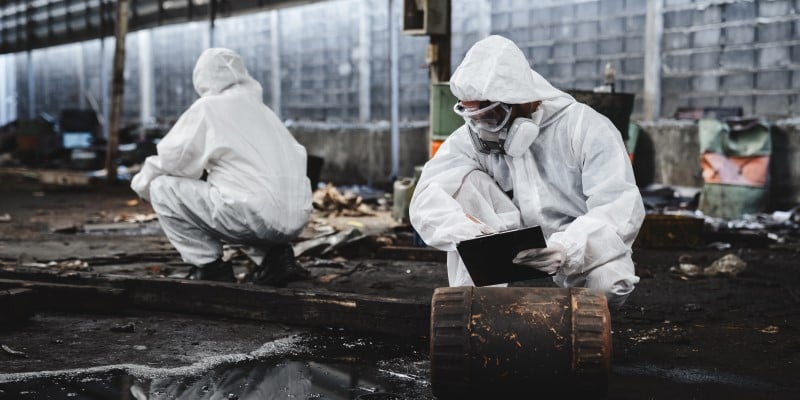 Radioactive sources provide a vast array of benefits within the field of nuclear medicine, from their use in diagnostic scanning procedures to the sterilisation of equipment and the treatment of cancers.
Radioactive sources provide a vast array of benefits within the field of nuclear medicine, from their use in diagnostic scanning procedures to the sterilisation of equipment and the treatment of cancers.
The earliest applications of nuclear medicine date back to the mid-twentieth century when physicians with an interest in the endocrine system first used iodine-131 in the diagnosis and treatment of thyroid disease.
Today, radioisotopes remain an essential element of medical diagnostics and, in combination with imaging devices that register the emission of gamma rays, provide a way for scientists to study the multiple dynamic processes taking place within the human body.
The growing demand for radioisotopes in medicine
According to figures published by the World Nuclear Association, more than 40 million nuclear medicine procedures are currently conducted every year, with around 90% of these being for the purposes of diagnosis.
The demand for radioisotopes is increasing at up to 5% annually while the use of radiopharmaceuticals is growing in excess of 10% per year.
With this increased reliance on the use of radioactive sources within medicine there also comes the responsibility to safely store and manage these sources and to sustainably dispose of the materials once they are no longer of use.
Disposing of disused sealed radioactive sources
The disassembly of disused radioactive devices is a complex and technically challenging process that relies on rigorously managed field operations and highly specialised radiological expertise.
Blood irradiators, for example, have been in production since the 1950s and are still used today in a wide variety of medical procedures including the provision of blood transfusions, organ transplants, bone marrow transplants and the sterilisation of blood products.
The material that makes blood irradiators so effective however is one that also presents a significant security challenge - the highly radioactive substance cesium-137 which is commonly used in the illicit production of radiological dispersal devices (RDDs) or dirty bombs.
When blood irradiators come to the end of their lifespan, their safe decommissioning and removal is crucial, both to avoid accidental exposure to cesium-137 and to prevent this highly dangerous radioactive material from falling into the wrong hands.
Facilitating the safe removal of DSRS
The International Atomic Energy Agency (IAEA) plays a key role in supporting nations and regions in enhancing their nuclear security by helping to facilitate the safe removal, shipping and storage of disused radiological sources.
The IAEA’s Integrated Nuclear Security Support Plan (INSSP) provides member states with a comprehensive and systematic framework for reviewing their nuclear security regimes, identifying areas for development and seeking help when needed.
In April 2021, the IAEA was asked to assist in the removal of a DSRS contained within a blood irradiator at a public hospital in the Arab state of Bahrain.
Such projects can be logistically demanding at the best of times, with the disassembly of radioactive devices requiring specialist expertise and the use of sophisticated bespoke equipment.
With the COVID-19 pandemic however, there was the added pressure of stringent border restrictions and increased health and safety measures, which called for an additional level of technical support.
In this case the IAEA opted for a virtual oversight system which enabled it to oversee the operation remotely while at the same time ensuring close contact between the IAEA, the service provider and the local authorities in Bahrain.
Improving the security of radioactive sources
Security issues can also occur when it comes to the safe and secure storage of medical equipment that utilises radioactive sources.
In 2012, the US Government Accountability Office (GAO) identified a number of security lapses involving blood irradiators that were being kept in areas that were unsecured or easily accessible by the public.
Over the past decade there has also been a growing push towards the use of alternative non-radioactive technologies (such as x-rays, linear accelerators and photochemical UV sterilisers) that are free from the regulatory, security and safety restrictions of radioactive sources.
By 2018, many countries including the United Kingdom, Canada, Italy and Sweden had replaced all of their irradiators, while Japan had reduced its supply by approximately 80 percent.
Radioactive sources remain hugely viable and valuable tools in the support of medical diagnostics and treatment.
At the same time, there is the need to ensure that the highest levels of radiological safety, control and security are maintained.
The appropriate management and disposal of disused sealed radioactive sources (DSRS) is an essential task, both in reducing the risk of accidental radiation exposure and in preventing their deliberate misuse.







